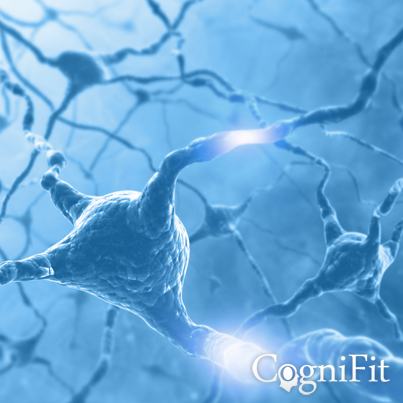Disclaimer: All material presented in this brief data analysis report, unless specifically indicated otherwise, is under current development by a group of external independent researchers. The analysis presented in this report is provided for information purposes only and are not to be used or considered as a peer-reviewed scientific publication.

Improving Cognitive Performance in Elderly Subjects Using Computerized Cognitive Training
Research presented at the International Conference on Alzheimer's Disease in Chicago
Conveniently manage research participants from the platform for researchers
Evaluate and train up to 23 cognitive skills in your study participants
Test and compare the cognitive evolution of the participants based on the data of your study
Original Name: Improving Cognitive Performance in Elderly Subjects Using Computerized Cognitive Training.
Authors: Evelyn Shatil 1, Amos D. Korczyn 2, 3, 4, Chava Peretz 2,3 , Shlomo Breznitz 1, Vered Aharonson 4, 5, Nir Giladi 2,3 .
- 1. CogniFit Ltd., Yokneam Illit, Israel.
- 2. Department of Neurology, Tel-Aviv Sourasky Medical Center, Tel-Aviv, Israel.
- 3. Sackler School of Medicine, Tel-Aviv University, Tel-Aviv, Israel.
- 4. NextSig, Israel.
- 5. School of Engineering, Tel-Aviv University, Tel-Aviv, Israel.
International Conference: Alzheimer’s Association -ICAD - International Conference on Alzheimer’s Disease. July 26-31, 2008; McCormick Place, Chicago.
Reference (APA Style):
- Shatil, E., Korczyn, A. D., Peretz, C., Breznitz, S., Aharonson, V., & Giladi, N. (2008, July 26 - 31). Improving Cognitive Performance in Elderly Subjects Using Computerized Cognitive Training. Alzheimer’s Association -ICAD - International Conference on Alzheimer’s Disease. McCormick Place, Chicago, 1-3.
Study Conclusion
CogniFit assessment has proven to be a good tool to measure cognitive improvements in seniors, providing more information than other assessments. In addition, CogniFit training has shown to be more effective than generic video games in strengthening seniors' cognitive state. Auditory short-term memory (P=0.0026), hand-eye coordination (P<0.0001), general memory (P=0.0312), naming (P<0.0001), shifting (P<0.0001), spatial perception (P<0.0001), time estimation (P=0.0016) and visual perception (P=0.0003).
Context
Senior citizens are susceptible to cognitive decline, which can lead to a reduction in their independence and quality of life. To prevent and reduce, this kind of age-related cognitive problems, there are certain possible interventions. One type of intervention that has been shown to be effective in strengthening seniors' cognitive state is computerized cognitive training.
In earlier studies, personalized cognitive training from CogniFit was found to be effective in improving cognitive abilities such as focused attention, visuospatial learning, short-term memory and shifting. This study was conducted by performing a cognitive assessment that did not cover all cognitive areas stimulated by CogniFit.
For this reason, it was decided to carry out an extension of this study by also applying the CogniFit cognitive assessment, so that it would be possible to detect if there were other cognitive abilities that improved as a consequence of the CogniFit computerized and personalized cognitive training.
Methodology
A total of 155 volunteers from the previous study, decided to continue participating in this stage of the research. The 155 participants were randomly divided into two training groups: one group performed the computerized cognitive training tailored by CogniFit, and the other group used generic video games. The training was performed during 3 months, 3 days a week, for 20 minutes each day.
CogniFit training, by adapting to the specific needs of the user, varied from user to user. So did the difficulty of the activities or the frequency with which each activity was presented. On the other hand, the generic video games used by the control group were Mathematical triangle, Labyrinth, X-O, Tangram, Tennis, Memory - Simon, Memory - Pairs, Numbers, Tetris, Puzzles, Target practice, Snake.
Cognitive abilities were measured at the beginning of the training and three months later, after the end of the training. For this purpose, the CogniFit General Cognitive Assessment, then called "Neuropsychological Examination - CogniFit (NEM)" and composed of 17 tasks similar to the standard neurocognitive tests, was used. This assessment measures all cognitive abilities worked on in personalized CogniFit training.
Results and Conclusions
42% of the total participants (66 out of 155) participated in and conducted various training sessions, but did not complete them and therefore did not carry out the final assessment. Of the 89 participants who did complete the training and the two assessments, 48 belonged to the experimental group that performed the personalized CogniFit training, and 41 to the control group that performed the generic video game intervention.
It was observed that the group that performed CogniFit training improved significantly in 8 cognitive abilities: auditory short term memory [P=0.0026], hand-eye coordination [P<0.0001], general memory [P=0. 0312], naming [P<0.0001], shifting [P<0.0001], spatial perception [P<0.0001], time estimation [P=0.0016] and visual perception [P=0.0003]. On the other hand, the group that used generic video games, only improved two cognitive abilities: eye-hand coordination [P=0.0115] and visual perception [P=0.0015]. Paradoxically, both groups significantly reduced their visual scanning score [P=0.0811; and P=0.0172, respectively].
On the other hand, the amount of improvement of those who used CogniFit during training was significantly higher than those in the control group in the following cognitive abilities: auditory memory [P(delta)=0.0007], shifting [P(delta)=0.0179] and time estimation [P(delta)=0.0249].
The results measured by the CogniFit assessment therefore replicate those of the previous study, adding information about other essential cognitive abilities that were not studied at the time. CogniFit systematic and personalized training has improved shifting, time estimation and naming.



